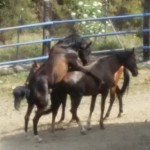 Insistently he paws the ground, his strong black neck rounded down to a bulging shoulder, a hint of the powerful magnificence he once must have epitomised as a stallion. “Surely you cannot leave before I have you again?!” Is this what his powerful posturing means? She inclines her head gently in his direction. He snorts and paws the dust again. She seeks the caress of his breath upon her sleek coat, spreads her legs and signals her willingness. This will not be rape. I unclip the rope lead from the webbing halter placed on her willing head moments before. There is no rush, I think. We will continue when you are done. Let nature have its way. Ignoring me entirely, the gelding lays claim to my eager mare and mounts her.
Insistently he paws the ground, his strong black neck rounded down to a bulging shoulder, a hint of the powerful magnificence he once must have epitomised as a stallion. “Surely you cannot leave before I have you again?!” Is this what his powerful posturing means? She inclines her head gently in his direction. He snorts and paws the dust again. She seeks the caress of his breath upon her sleek coat, spreads her legs and signals her willingness. This will not be rape. I unclip the rope lead from the webbing halter placed on her willing head moments before. There is no rush, I think. We will continue when you are done. Let nature have its way. Ignoring me entirely, the gelding lays claim to my eager mare and mounts her.
Natural
The expression on Pip’s face says it all. She is radiant, a vastly amplified variant of the mood that has characterised the season in which Vicki and I found her upon our return from our saddle-fitting course in France several days ago. One of easy tranquility, so it seemed, until a single word laid claim to my sense of it all. Serene, Pip is and has been supremely serene in the past few days. I watch her as she tries to accommodate Pingo’s determined thrusting and it suddenly occurs to me that, until the gelding had joined the herd a few days earlier upon our return, my mare had probably never encountered the amorous advances of a male in her entire life. Such has been merely one aspect of the quality of her life in captivity. The realisation is staggering.
“Well, there’s nothing more natural than that!” The words claw my attention away from the horses but not before I see Pingo, defeated by her surfeit and his deficit of size, back off and abandon the chase. It is the mother, her daughter not far behind her. From the corner of my eye I had been peripherally aware of Pingo’s owners making their way down the hill towards us. Now they had come to claim their horse as I had mine. No, possibly not, nothing more “natural”, the epithet presumably also echoing the overall attempts to create a more horse-friendly environment at our livery yard.
Pip casts a caring glance back towards Pingo. All four feet back on the ground, he stands still as though contemplating his thwarted lust. My mare adjusts her body and straightens out her limbs. Composed again, she moves towards where I stand next to Vicki, who is holding Anaïs. I clip the rope back on to Pip’s halter and the four of us turn to make our way up the hill to the exit, while mother and daughter move towards Pingo. “Natural”, I contemplate the concept in relation to Pip at my side as we match the energy of our movement.
Natural?
This concept of natural, it is so very tempting to embrace, especially when part of it seems to be recreated in our own backyard, as it were. It was in the afternoon when Pingo was finally released into our herd. Vicki and I had returned from Australia the day before and had a few days to spend with the mares before heading to France for the first practical component of our saddle-fitting course. I felt privileged to witness this, as Pingo had acquired a reputation for being a difficult horse at Equinatural, our former livery yard, where our mares also lived as part of a herd, albeit an arbitrarily created one, as is the case here. Indeed, it was a reputation that saw him precluded from the herd and even confined to a stable for months on end to accommodate a well-paying client. Was he really a rig?
Faced with his history and reputation, Monica, the manager of our current livery yard, had wisely had Pingo’s blood examined. The findings were encouraging enough to allow for his entry into the herd and this was the day when it was to happen. The fence separating him and a companion mare from the other 30-odd horses came down. The mare stepped forward but Pingo stood still, calmly surveying his new companions. We spent the better part of an hour watching the gelding move through the herd. Monica had prudently ensured that there was abundant feed scattered in numerous piles throughout the huge field. All the horses were eating, except Pingo.
Pingo finally breathes freedom and begins to explore his surroundings
As tensely anticipated events go, Pingo’s release was an anticlimax. Yet it was as spectacular in its liberation of this bold, misunderstood horse as it was uneventful. Apart from a brief standoff with his appaloosa nemesis from the former Equinatural herd, Shaman, which was accompanied by a scurry of fierce macho posturing amounting to much ado about nothing, there was ultimately not a single horse who did not defer to him and allow him passage as he carved his way through the herd. Relieved and joyed by Pingo’s liberation, Vicki and I left the yard.
Upon our return the following afternoon, we witnessed a sight that brought a smile to my face. Pingo was standing well away from the rest of the herd with a provisional selection of the mares who were to constitute his band. Pip and Anaïs were amongst them. No surprises there. What was surprising was that the gelding had created the equivalent of a small harem band, a phenomenon that is typical of wild herds as so vividly captured on film in Ginger Kathrens’ Cloud series. Never before had I witnessed the organic creation of an equine band in a domestic herd and I am not aware of any recorded account of this occurring amongst horses in captivity. Perhaps others have or are. Yes, this seems so natural. But with a gelding? Natural?
Riding
And riding, how natural is it? If the “natural horsemanship” crowd are to be believed, utterly so. Vicki and I are seated with another ten students listening to the introduction to the practical component of our Master Saddle Fitting Consultant (MSFC) course. I am here for two reasons. Like Vicki, practising Equine Touch has shown me that poor fitting saddles probably account for more pain and discomfort in a horse’s upper body than almost any other single factor. Horse owners are likely to take our recommendations to have their saddle checked more seriously, if we are qualified saddle fitters. My second reason is of a more personal nature. If I am to ride Pip without injuring her, I need to be able to select and maintain a saddle which fits her properly.
“The first thing to realise is that the horse is not designed to be ridden.” The speaker is the MSFC director, Gerry van Oossanen, an equine health practitioner and saddler specialising in equine back problems and neurological disorders who has also lectured at the internationally renowned veterinary school of the University of Utrecht in the Netherlands and who works together with one of Britain’s most respected master saddlers, Laurence Pearman. Vicki and I glance at each other. We have come across similar sentiments uttered by some of the finest practitioners of equine veterinary science and horse people. The vast majority of horse riders also concede, albeit unwittingly, that horse riding is unnatural in that, before they can ride a horse, it must presumably have been “backed”, a euphemism for what was generally referred to as “breaking in” when spades were still referred to as that before they became shovels, as it were. Put another way, riding a horse is simply not natural and the concept of a “natural horsemanship” practitioner riding a horse is a paradox. The implications are staggering.
So why ride a horse if it is unnatural to do so? I ponder this question but only for the briefest of moments before roundly dismissing it. The question, so it seems to me, is utterly irrelevant. The simple truth is that humans ride horses. So vast is the majority of horse owners who ride their equine friends, that one usually has to travel far and wide to encounter those who do not. Put another way, the unnatural has become normal, as have so many other aspects of human-horse interaction. And ultimately, whether we are in favour of any aspect or another of this state of affairs, it is quite simply our starting point if we are committed to helping the horse. So, if riding is part of our starting point, perhaps we need to consider the interface between the horse’s back and the human’s bum.
The saddle
And so we come to the saddle and a paradox. Most, if not all riders would like their horse to perform well, even where the purpose of riding is no more than recreational pleasure. Those who use their horses to compete in one or more disciplines, whether English, western or otherwise, are even prepared to invest a great deal of time, effort and money in an array of training techniques, programmes, gadgets and devices. Yet all too often, many refuse to invest in the starting point for all things pertaining to equestrian performance. Here I am referring to the very interface which enables them to do anything while astride their horse, namely, the saddle.
Why use a saddle? Why not bareback? Why not a bareback pad? If there is anything that I have become particularly aware of during my studies of the horse, my practice of Equine Touch and now this saddle-fitting course, one that must feature rather prominently is the physical nature of the horse and, in particular, Gerry’s observation that the species is not designed to carry ours. Bear in mind that a horse carries the bulk of their weight on their forelegs. Once a rider climbs on board, the bulk of their weight is in turn added to this load. Yet there is absolutely no skeletal attachment linking those forelegs to the spine, which serves as the very core of the horse’s skeleton. Now consider the position of the rider on the horse, which is in an area of the back that is not directly supported by any limb, a bit like a longish plank supported at both ends by trestles but with the primary load borne by the plank in between one side and its centre rather than where it is strongest, namely, at either of the two ends supported by the trestles.
By contrast, a human does have a skeletal attachment connecting the arms to the spine, being the collarbone. And it is that very bone which serves as a strong load-bearing surface because it is supported by all of the vertically aligned bones in our trunk and legs. Thanks to our design we humans are actually capable of carrying a load on our shoulders that is greater than that which a horse is capable of bearing on their back in proportion to the respective weight of the two species.
Note the horse’s spinal processes from the withers to the end of the rib cage. Would this saddle give them enough clearance?
Now throw in a bit of a knobbly spine and we have a huge potential problem. Anyone who has studied equine anatomy will be aware that all of the horse’s vertebrae in that part of its spine covered by the saddle have vertical processes which protrude upwards towards the skin. Placing the weight of a rider directly on those bony attachments has the potential to injure those vertebrae, for instance by forcing them together to cause “kissing spine”, which is precisely why saddles are made with gullets to keep the weight of the rider off the spine. This in turn answers the question why any saddle or pad without a gullet has the potential to allow the rider’s weight to injure the spine. And no, riding bareback does not solve the problem either because, although there is no added weight of a saddle, the rider’s weight is concentrated in a very small area of the horse’s spine and bears down on largely on two bony points (our seat bones) which are so close to most horse’s vertebrae as to compromise at least the thin layer of equine tissue between them.
A well-fitting saddle
So what is a well-fitting saddle? Well, if my course tutors are to be believed, essentially it is one that evenly distributes the rider’s weight along the “load-bearing” area of the horse’s back, while comfortably accommodating the human posterior, although there are other secondary factors which also require consideration. You would be excused if you were to choke on the concept of horses being born with or growing up to develop a human load-bearing area, for the very idea has as much to do with nature as lipstick to a horse. Viewed within the context of the equally unnatural practice of saddle-fitting, the term of course refers to that part of the horse’s back which is less likely to be harmed by the weight of a rider and their appurtenances, namely, the muscles lying adjacent to the spine on the top of the ribcage from about five centimetres or two inches behind the shoulder to no further than the last (eighteenth) thoracic vertebra, that is, where the hindmost rib meets the spine.
Let us assume for the moment that we have found a well-fitting saddle. We put it on the horse and girth (“cinch” to our North American friends) it up properly. What happens? Michael Bevilacqua, the author of Beyond the Dream Horse, conducted an experiment with a set of bathroom scales. This is what he found when he tightened the girth around the scales:
A thirty-six pound, or sixteen kilogram saddle became one hundred forty-two pounds or sixty-four kilograms. That does not include the pressure produced from the cinch strap.
(Beyond the Dream Horse, p. 69)
The rider
Now add a rider to the equation and see what happens. Stormy May, a former equestrian competitor and riding coach, and the creator of the eye-opening video documentary, The Path of the Horse, came up with some research conducted on the question by the internationally renowned vet and saddle expert, Dr Joyce Harman. This research I originally mentioned in my post entitled, Towards Riding 2 – To Ride or Not to Ride, and it is worth repeating it here:
Stormy May presents the findings of some of the more pertinent ones in Chapter 3 of her book, The Path of the Horse: From Competition to Compassion and quotes Harman’s conclusion to the effect that “Pressures that exceed 0.75 psi will close down the blood flow in the arterial capillary bed” of the horse’s back, because that is the highest blood pressure found in that area. The best saddles that Harman found in her study were graded at 1.93 psi, which is more than twice the pressure required to cut off the blood flow in the capillaries of the back. According to Harman, studies of canine and human muscles have revealed that sustained pressure of a mere 0.68 psi for over two hours can cause significant superficial tissue damage as well.
Of course, saddle pressure does not only manifest itself on the surface of the horse’s back. It is actually transferred through the muscles to the bony structures. Stormy May quotes Harman as stating that, “There is surgical evidence in human medicine that subcutaneous necrosis [the death of cells] begins closer to the bone before cutaneous redness and ulceration is seen”. Transposed to the equine condition, this means that white spots or tender swelling in the saddle area are the end results of a long process of shallow and deep tissue destruction.
The trailer for Stormy May’s video documentary, The Path of the Horse
But we are not done yet. Still assuming that we have placed a well-fitting saddle on the horse, let us examine the impact of the rider in trot and canter. In an article entitled “Science in the Saddle: Peak Performance or Just Pressure” published in the November 2013 edition of Horses and People, Lisa Ashton, the director of EquiSci, quotes the following statement made by equine researcher, Dr Hilary Clayton, during the Ninth International Society for Equitation Science (ISES) conference: “ Maximum pressures in the walk are the same as the rider’s body weight, whilst in trot they are twice the rider’s body weight, and in canter up to three times the rider’s body weight”(p. 49). Little imagination is required to realise that the more inexperienced the rider, the more likely it is that this pressure will be even greater.
Ethics of saddle fitting
The bottom line of this scenario is this. Even if we manage to find a well-fitting saddle and the rider is capable of riding properly, it may still be harmful to the horse. Put another way, even with a well-fitting saddle, riding a horse is an unnatural activity in that it is potentially harmful to the horse. I have laboured the point here to emphasise my starting point when it comes to riding and to highlight my appreciation of a saddle-fitting course which starts from this premise. In that Gerry stresses that horses are not designed to be ridden, she has situated the entire saddle-fitting course and even her entire approach to saddle-fitting in general within an ethical context, in which the pursuit of a saddle which minimises the potential harm it can cause to the horse as far as possible becomes the primary aim of saddle fitting, the choice of a saddle and related tack, and even their use.
Yet Gerry does not uphold a pie in the sky approach to the ethics of saddle fitting. Throughout the course she emphasised the very practical grounds which constitute the basis of her approach. In a nutshell, these grounds amount to this. Only a “happy” horse is capable of performing well and, if a human insists on riding, not only must the horse be capable of carrying them, but a saddle which fits both horse and rider well is an absolute prerequisite for the horse’s “happiness”. I find such an approach difficult to argue with even if the guise which its enunciation assumed during the course sometimes made the hairs at the back of my neck curl.
New skills
If the speed and depth at which I fell asleep each night is a reliable measure, the week we spent acquiring practical saddle-fitting skills represents one of the most intensive courses I have ever attended. Together with the other trainees, we were living, breathing and talking saddles from dawn to lights out every single day. So full on it was, that by Friday night Vicki and I needed to get out and crash the local pub. This we did and yours truly negotiated his way through what passed for a crowd of locals and ordered beer for the pair of us in his best French, only to discover that everyone was English and even the French barman could speak the language.
Initially, Vicki and I were particularly aware that we were two of only three of the students attending the course who are not professionally involved with saddles in our everyday lives. This I sought to turn into a virtue by insisting that we therefore carry less baggage which would interfere with the learning process. It must have worked, because both of us passed this practical component.
So what did we learn? Essentially, we can break down our new skills into three subsets. Firstly we learned how to take an existing saddle, and examine and evaluate it. There is more to a saddle than meets the eye. It was exceptionally useful to learn this. Secondly, we familiarised ourselves with the procedure for examining, measuring and assessing a horse, in particular, their conformation, condition and back. And finally, we learned how saddles are made and how to fit the various types on their own or with support where required. A gratuitous helping of information on bits and bridles was also on offer but with hindsight I would have appreciated a bit more saddle fitting practice instead.
So does this make us skilled saddle-fitters? As Gerry explained, it is a bit like obtaining our driving licence. We now have the information and wherewithal to start driving, as it were, but only experience and self-study will enable us to develop into good drivers. In addition, there is still truckload of theory which we have to study followed by a detailed case study. I imagine that we will not be celebrating a new qualification just yet.
Our hosts
What was rather interesting for all concerned was the choice of venue for the course. Because Gerry’s training facility had not yet been completed, we were hosted at Les Ecuries du Saumort, a “natural horsemanship” livery yard cum bed and breakfast establishment close to Poitiers, France. From the horses and their owners through to our hostess, Sarah, and her friendly team, not to mention the friendliest pigs that I have ever encountered, we received a warm welcome and greatly appreciated assistance right through to our exams on the final day.
If fine food and pleasant company are the benchmark for convivial living, we did pretty well during the course. Clearly aware that major demands were going to be made of us, Gerry arranged for a gifted chef to take care of our nutritional and culinary needs at another bed and breakfast establishment. Amanda conjured up magic for us in the kitchen every afternoon and evening, allowing us to wash the good stuff down with a couple of glasses of French wine before returning to base for cup of tea and a chat before collapsing into bed.
The bottom line
Upon our return from France, I was keen to see my mare again and to employ my newfound skills to take the first few steps towards finding a saddle for us. Pip of course had other ideas, which is where we came in. And as I reflect on the natural nature of her dalliances with Pingo, I consider the entirely unnatural prospect of riding her and fitting a saddle on her to do so. Why would I want to do it? I have been dismissive of other humans’ reasons. My own are far more difficult to dismiss.
If you have been following my story for some time, you will be aware that this issue has haunted me on a number of occasions, the most recent being when I finally started riding Pip without a saddle earlier this year, as described in my last post, Riding – The Merging of Two Spirits. Again I read what I wrote then and compare it to what I had written about riding before I had ridden my mare (Towards Riding 1: The Horse) and Towards Riding 2 – To Ride or Not to Ride). There is one almighty difference between before and after and it is this: the magic of the merging of two spirits into a single motion of shared intent and energy, what Klaus Ferdinand Hempfling refers to as the tip of the iceberg and what I have described as the icing on the cake.
Yet now, with the knowledge and skills that I have acquired through this saddle fitting course, I am conscious that I need a proper saddle for Pip if she is to carry me without injuring herself. And I am also aware that it is not going to be easy to do so, because my mare is seriously out of sync. Her right shoulder is bigger and extends further back than her left one, while the latter is higher and somewhat more pronounced. Is it possible to fit a saddle on a horse such as Pip? I hope to answer this question through my case study. And more importantly, even if I manage to fit a saddle on Pip, will it be possible for us to go riding together without me harming my equine friend? This, the line my bottom makes on her back, is ultimately the bottom line.
Horses and Humans on Facebook
May I remind you that we now have a Horses and Humans group on Facebook. If you would like to leave a comment, you can do so on this blog or on the the Horses and Humans Facebook group page. All new posts will feature on that page along with additional content posted by any of our members. Please feel free to join us at:
https://www.facebook.com/groups/horsesandhumans/
There is also a Horses and Humans publications page, which contains information concerning the publications released under the Horses and Humans imprint. Some of those publications will be free of charge. You will find it here:
https://www.facebook.com/horsesandhumans
I also have a Facebook page through which you may contact me. You will find it at:
https://www.facebook.com/andrewglynsmail
Equine Touch
Our Equine Touch business is called Humans for Horses, you can find our website at:
http://www.humansforhorses.com/
and our Facebook page at:
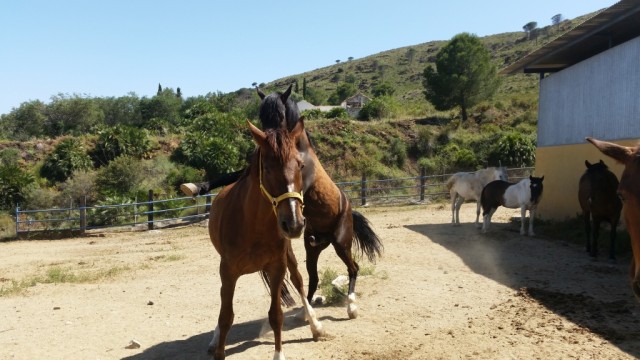
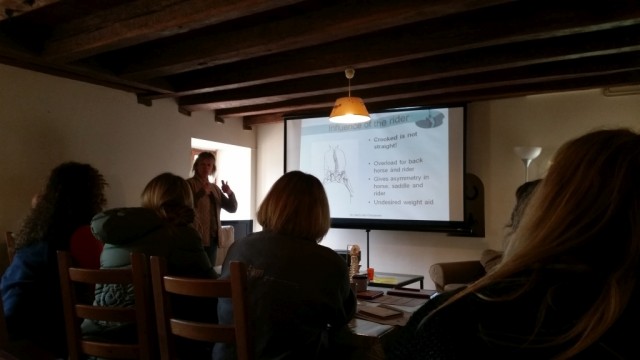
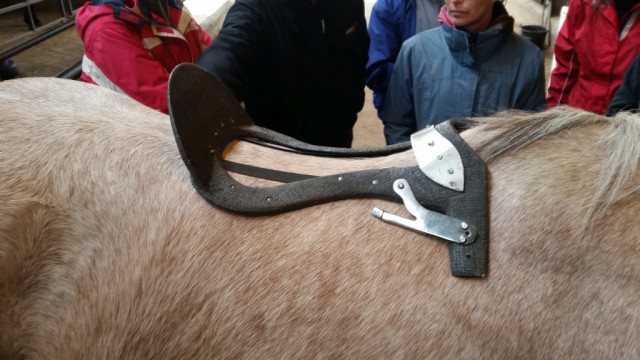
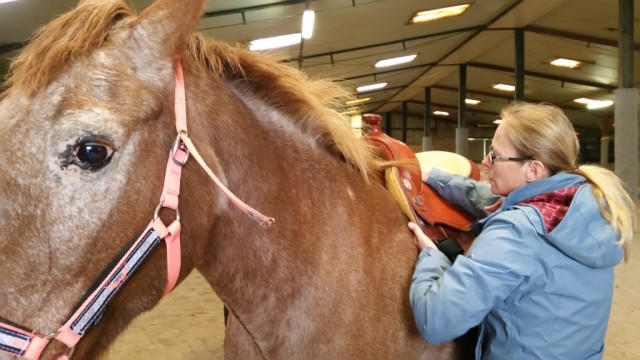
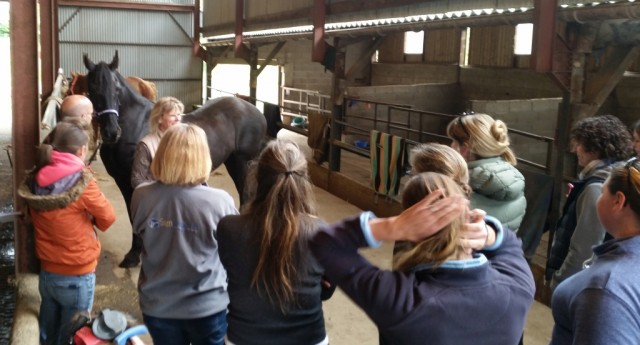
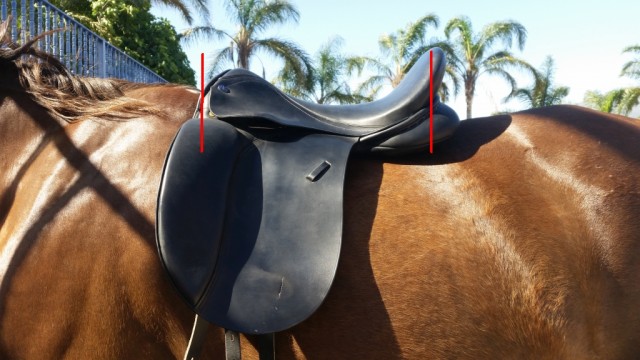



So…….you seem to be firmly onside with the idea to use a treed saddle. I am looking forward to hearing your ideas about various designs…….e.g traditional English GP, Australian style stock saddle, Spanish, Portuguese etc ( no doubt over a substantial period of time). There is also problem created by varying shape and weight of the horse according to the current lifestyle…..not to mention these same factors as applied to riders; and the question of so called adjustable saddles.
And as far as we users are concerned, should we spend mega bucks on made to measure or ring the changes with cheaper mass market.
Over a 30 year period I have been a user of mass market products and most commonly constructed of synthetic (non traditional ) materials.
A qualified saddle fitter is an easy target for some people who can never be satisfied…..all I can say to that is….. good luck.
Hello,
I have followed your blogs for a few years now and really enjoy all the wonderful insightful information that you have shared. The question of whether or not to ride has seemed to be an ongoing struggle with you (and perhaps many others). We don’t want to hurt our horses in any way and want to give them the very best. You are doing all the right things- going far beyond what any horse owner would do for their horse- and I commend you on this! But this ongoing struggle with what you know logically and scientifically is true about the damage we can create by riding our companion I feel creates a place of sadness within. We love our horses and only want the best, but we also love the joy and freedom we get from being around them as well as riding them. So if we can get out of our minds and into our “hearts” and ask our horses if it is ok that we ride them- knowing we will do our best not to hurt them- and you get a “yes”, then by all means go for it. If the answer is no then we honor that. If we have a true partnership and the horse is healthy and happy, I think they will gladly oblige. The bottom line is really, “are THEY ok with it?” They may never be 100% physically well, but if the bond and relationship you have with them and they with you come from a place of love , authenticity and respect then they will move heaven and earth for you as you have for them.
Andrew, another interesting pieces of writing.
A number of passing thoughts spring to mind as I read.
In relation to Pingo:
Has Pingo been really, properly tested to ensure he does not have any viable sperm? It would be a tragedy (albeit an interesting one) for you or any of your other livery occupants to have to deal with an unwanted foal.
Pingo’s behaviour is extraordinarily stallionish in his behavoiur. That is not to say he is one, but if it were me I would want to be 110% sure he is not going to provide my mare with a foal.
From our personal experience geldings can and do exhibit shadows of stallion behaviour. There was a period in our herd of 12-15 (depending on the comings and goings) when Murphy selected a couple of mares and created a loose little harem, this lasted a number of months and then evaporated. MacGregor exhibits strong protecting the herd behaviour when new horses are introduced to the herd – the new horse is very much told to keep on the far outer for a week or two before it is allowed to integrate fully into the big herd.
In relation to saddle fitting:
No, it not natural to ride horses, nor is much of anything in relation to what we do with or to horses in a domestic situation…..even the most ‘natural’ horse keeping methods is wholy un-natural. So I think the idea of gaining a solid knowledge base of all we do, and then if we choose to continue to keep horses working at minimising the harm and increasing the natural living and behaviour is what can be done.
I will also be interested to hear your thoughts, at some point, on treed v’x treeless saddles. There are two such strong camps on this aspect of horse tack.
Keep up the good work
Smiles
Kell
http://www.waterfallcreek.com.au